The culturally rich state of Madhya Pradesh is every traveller’s delight. Bordered by Uttar Pradesh, Chhattisgarh, Maharashtra, Gujarat and Rajasthan
The culturally rich state of Madhya Pradesh is every traveller’s delight. Bordered by Uttar Pradesh, Chhattisgarh, Maharashtra, Gujarat and Rajasthan it has turned into a melting pot of various cultures and traditions that coexist in utmost peace and brotherhood. Lovingly referred to as ‘Hindustan Ka Dil’ or the heart of India, Madhya Pradesh is home to several tribes and a plethora of indigenous cultures. The traditional folk dances of Madhya Pradesh are lively, vibrant and extremely colourful. The dances are a way of embracing every culture while preserving their own beliefs as well.
Here are the 12 folk dances of Madhya Pradesh:
1. Jawara Dance
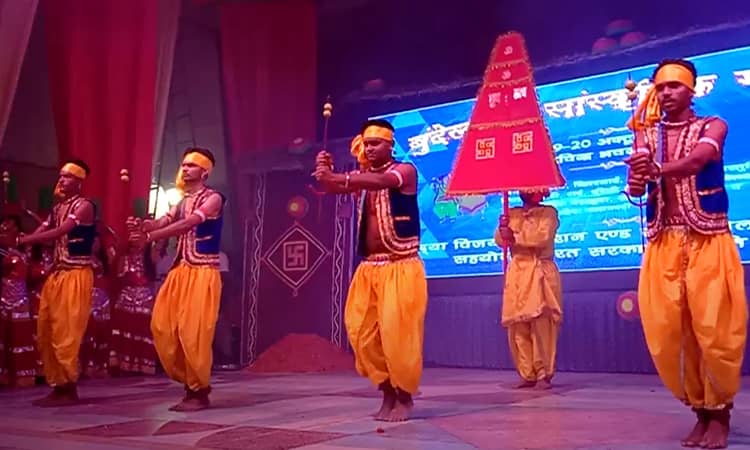
Popular mainly amongst the peasant community of the Bundelkhand region, Jawara Dance is one of the most famous folk dances of Madhya Pradesh. The peasant community of MP depends on agriculture for their livelihood. The dance is performed during the reaping and the harvesting season to please the gods and thank them for a good season. Also referred to as ‘the harvest dance’, Jwara Dance requires a lot of skills and practice. The complex steps involve the use of some props by both male as well as female dancers. The dance is a visual treat for the audience where women can be seen doing intricate steps while balancing a Jawara crop basket on their head.
2. Grida Dance
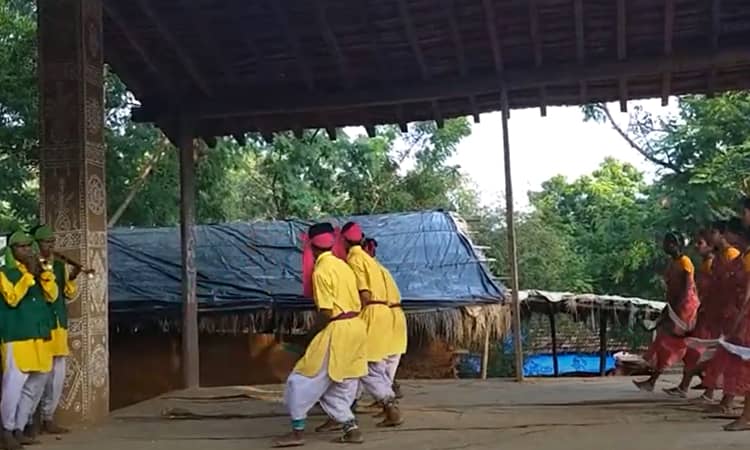
Grida Dance is mainly performed to celebrate the harvesting of Rabi crops, which are basically the crops that are sown during the winter season. This folk dance is a way of strengthening community bonds and bringing together the people in one special bond. The point of this dance is to let people know that their Rabi harvest is ready to sow and congratulate each other for their hard work. It also represents that the community is ready to relax now. The dance takes place in 3 phases where its starts off slow, then it gains some pace on the footwork and finally their whole body starts swaying in a rhythmic motion.
3. Bhagoria Dance
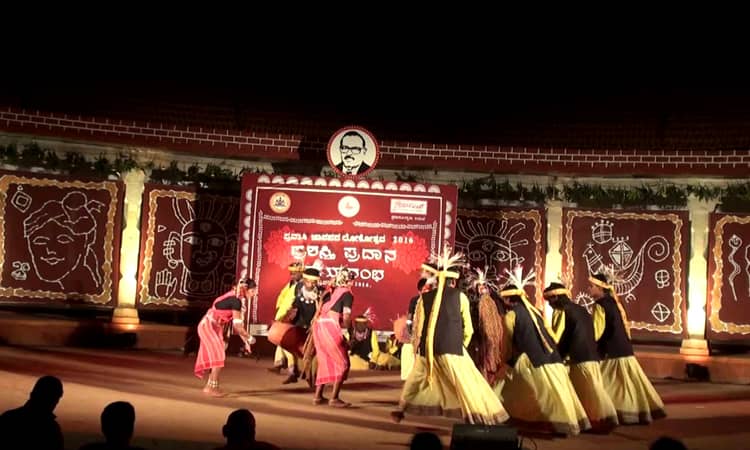
Bhils are one of the largest tribal communities in Madhya Pradesh. The roots of Bhagoriya Dance can be traced back to the Bhil community of Jhabua district. The dance draws its name from the Bhagoria Festival or the Bhagoria Haat. The Bhagoria Haat or fair starts off on the day of Holika which begins 7 days prior to the day of effigy burning. It is a grand celebration time for the locals where they meet and exchange pleasantries. As a part of the performance unmarried boys and girls create links amongst each other as prospective brides and grooms.
4. Matki Dance
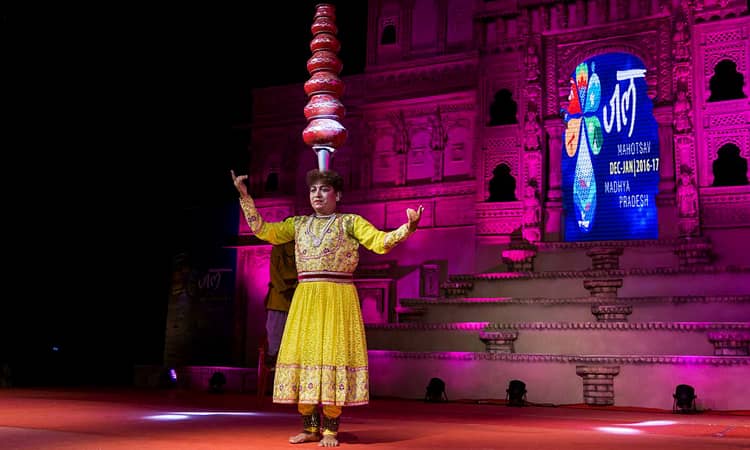
Performed majorly in the Malwa region of Madhya Pradesh, Matki performance is not only a folk dance it is an art. This solo performance involves the sturdiness, core strength and impeccable balancing strength of the ladies as it involves carrying matkis or earthen pitchers of varying sizes on their head. It is widely performed during special occasions such as weddings, birthdays and festivals. Lady performers can be seen wearing traditional colourful sarees and lehengas along with interesting ornaments to pull the whole ethnic clothing together. The dancer nimbly moves in circular motion to the sound of dhols.
5. Chaitra Dance
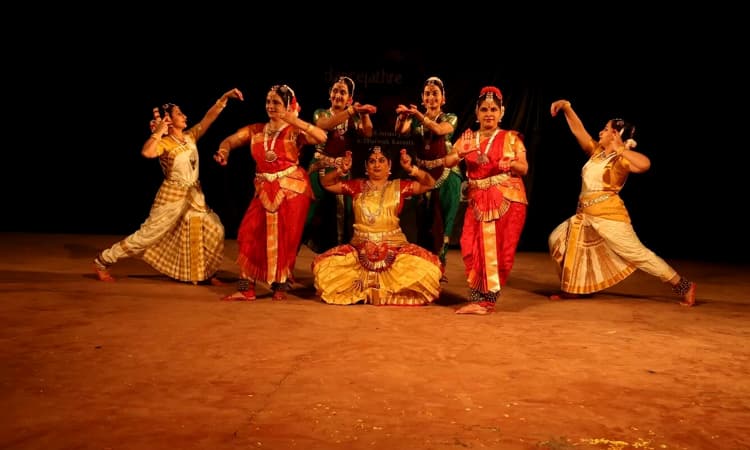
Famous among people of the Gond community residing in the Bastar district, this dance is a marker of the famous Chaitra festival. Performed primarily after the harvest is gathered and ready for usage, it is a dance done to thank goddess Annapurna to seek for her blessings for the next set of crops. This folk dance involves men and women standing in a circle, semi-circle or rows formation holding each other’s waist. Other than the colourful costumes the dancers also put on peacock feathers, garlands and other shell jewellery to beautify their appearance as much as possible. Instruments like Tapri, Timki, Shehnai and Nagadas are used.
6. Kaksar Dance
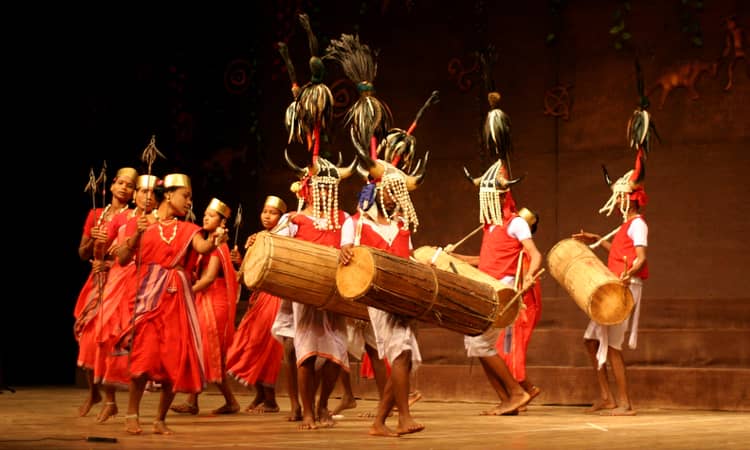
Kaksar Dance of Madhya Pradesh is more than just a folk dance, it can be defined as performance art. This dance of the marias hill is one of the most elaborate performances in the state. The dancers carry a dummy horse on their shoulders and move in a slow rhythmic manner while staying in a wide circle. The origins of this dance can be traced to the Abhujmaria Tribe settled in the Bastar region of the state. The dance is also related to agricultural celebrations where the Maria cultivators worship the gods for reaping a good set of harvest. The melodious music accompanying the swaying motion of the dance makes it a very soothing experience to be a part of.
7. Karma Dance
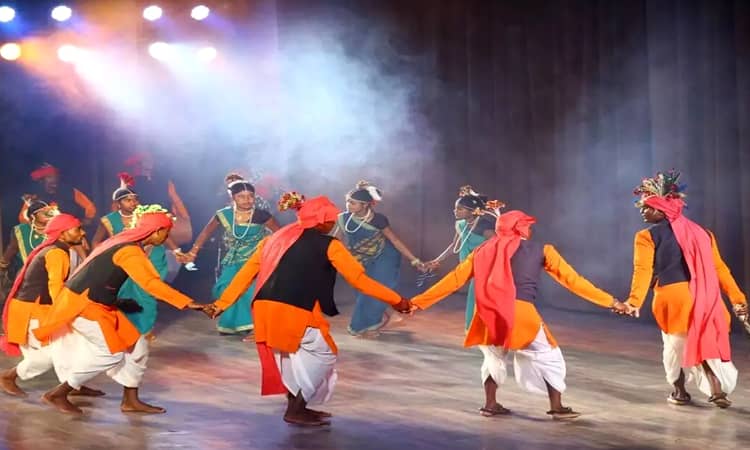
Karma dance is another important folk dance form of Madhya Pradesh. Famous among the people of the Gond and Oraon Tribe of Madhya Pradesh, Karma dance is used as a mark for the onset and the end of the rainy season. It is symbolic of the beginning of the spring season where the village people gather around the trees to dance their hearts out and welcome the change of season. Enthusiastic men and women can be seen performing this traditional dance. The men’s steps involve forward leaps while the women can be seen sitting down and doing their steps.
8. Maanch Dance
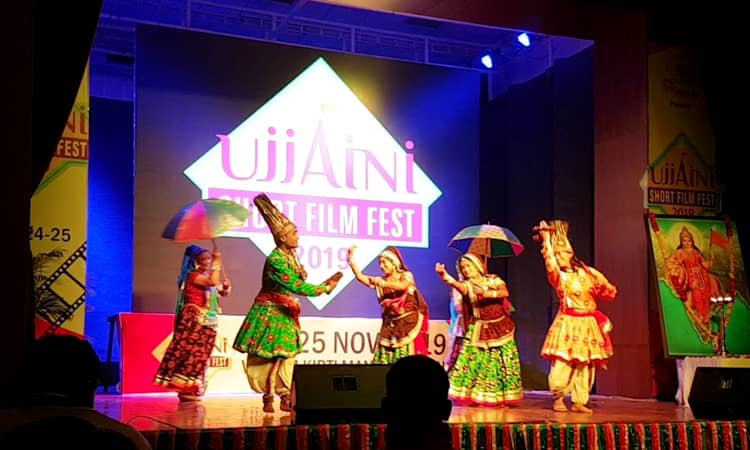
Maach is a famous theatre folk dance performance which is mainly famous among the people of the Malwa region in Madhya Pradesh. The roots of this dance is traced back to the Khyal theatre dance form of Rajasthan that later took the Nautanki Theatre form. The term Maanch is derived from the term Manch which means a stage. The theme of the performance involves the combination of religious and secular themes that is sort of sacred and religious in character. Takes on history and legends like Mahabharat, Purans and Ramayana are told through these dance and theatre performance acts.
9. Phulpati Dance
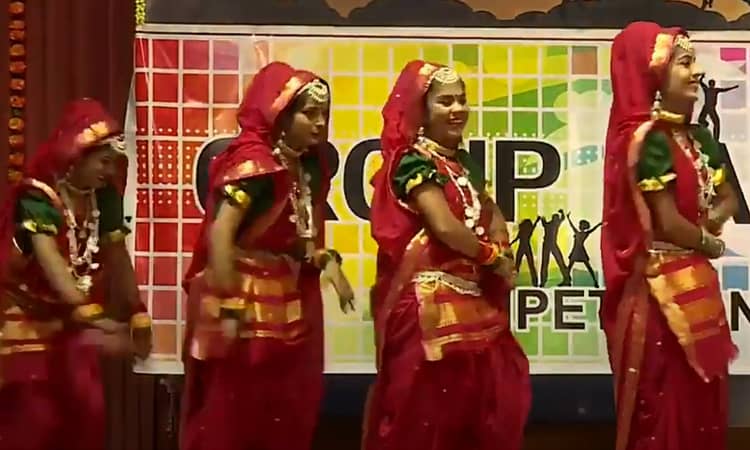
Malwa is one of the most culturally active and thriving districts in Madhya Pradesh. Phulpati is another dance that originates here. Performed by unmarried girls on the holy occasion of Holi, this dance is incredibly colourful and vibrant. The costumes are just as traditional, folk, colourful and extremely vibrant as used in any other type of folk dances in Madhya Pradesh. Phulpati Dance is also associated with Dashain Festival that goes on for 15 days. The dance performance involves the dancers praying to Mother Nature to keep their families safe.
10. Tertali Dance
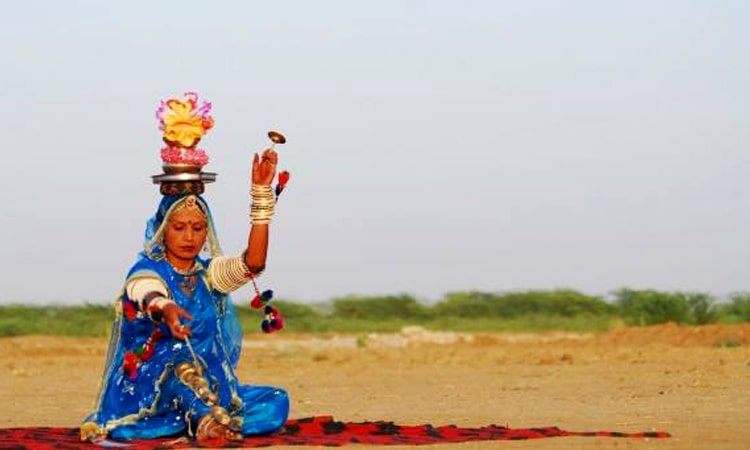
This has to be one of a kind of a dance originating from central India. Performed by the Kamar Tribe of Madhya Pradesh, the dance performance involves a group of 2-3 women who dance together in Practised unison and rhythm. The dance involves them sitting on the ground with small handmade cymbals tied around their waist called Manjiras that ting against each other while they dance. They even hold metal cymbals in their hands that they strike against each other while dancing simultaneously. Some dancers take the performance to another level by balancing a pot on their head while clenching a sword in between her teeth.
11. Lehangi Dance
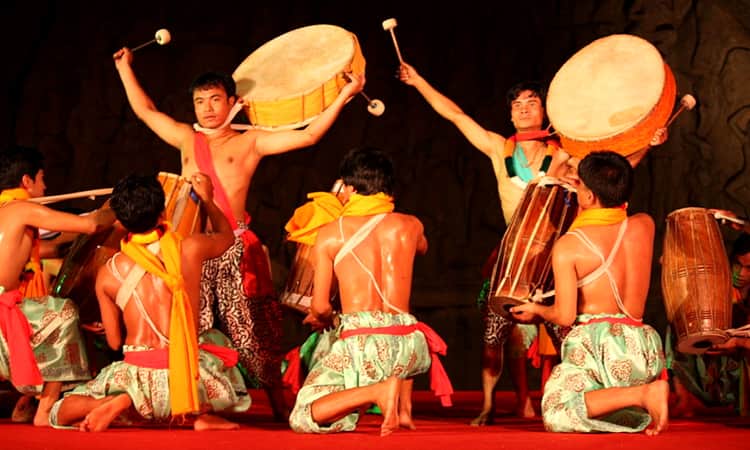
Lehangi is traditionally a folk dance of the Kanjar and Banjara Tribes that reside in the Bhopal region of Madhya Pradesh. This monsoon folk dance is a major part of the Raksha Bandhan celebrations and marks an important phase in the year. It is a men-centric dance where they can be seen holding some sticks in their hands and performing acrobatic tricks. This is one of the most dramatic dance forms of Madhya Pradesh. It combines the rhythm of the dance steps with interesting and mesmerising acrobatic stunts which is a treat to watch.
12. Saira Dance
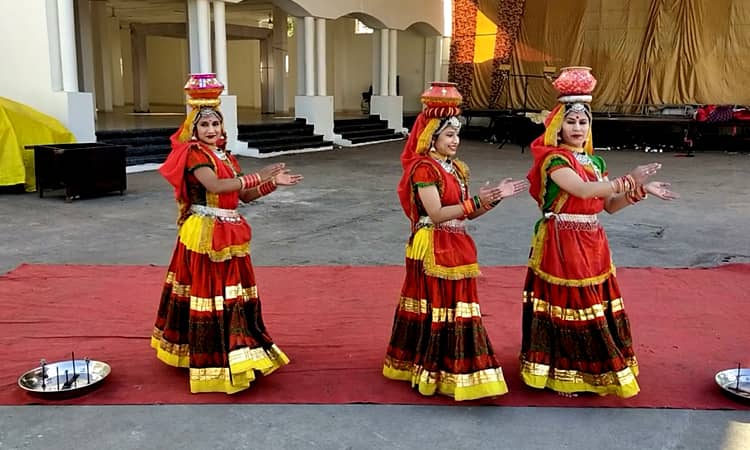
Drawing its inspiration from the Dandiya Dance performance of Gujarat, Saira Dance is a prevalent folk dance done in the festive occasion of Gangaur. The dance hails from the Bundelkhand region and is mainly performed by the peasant community of the state. It is a dance that is done to please Lord Indra and ask him to bless the community with a healthy, nurturing and fruitful harvest. Young boys and girls take part in this dance which is accompanied with melodious folk songs sung by the local audience.
Frequently Asked Questions (FAQs)
Q. When Is The Best Time To Visit Madhya Pradesh?
Ans. October to March is the best time to visit Madhya Pradesh.
Q. What Are The Famous Hill Stations In Madhya Pradesh?
Ans. Pachmarhi, Mandi Hills, Amarkantak Hills, Shivpuri Hill, Omkareshwar Hills etc. are some of the most famous hill stations in Madhya Pradesh.
Q. What Are The Top Places To Visit In Madhya Pradesh?
Ans. Bandhavgarh National Park, Gwalior, Kanha National Park, Pachmarhi, Khajuraho, Orchha etc. are some of the top places to visit in Madhya Pradesh.
Q. How Many Days Are Enough To Explore Madhya Pradesh?
Ans. 10 days are enough to explore the whole state of Madhya Pradesh.
Q. What Is The Tourism Capital In Madhya Pradesh?
Ans. Bhopal is the tourism capital in Madhya Pradesh.


COMMENTS